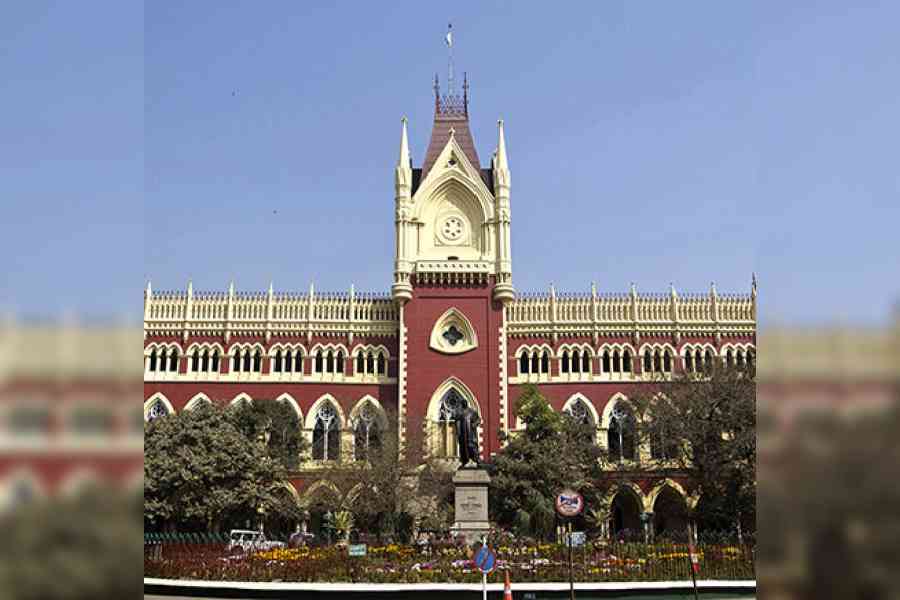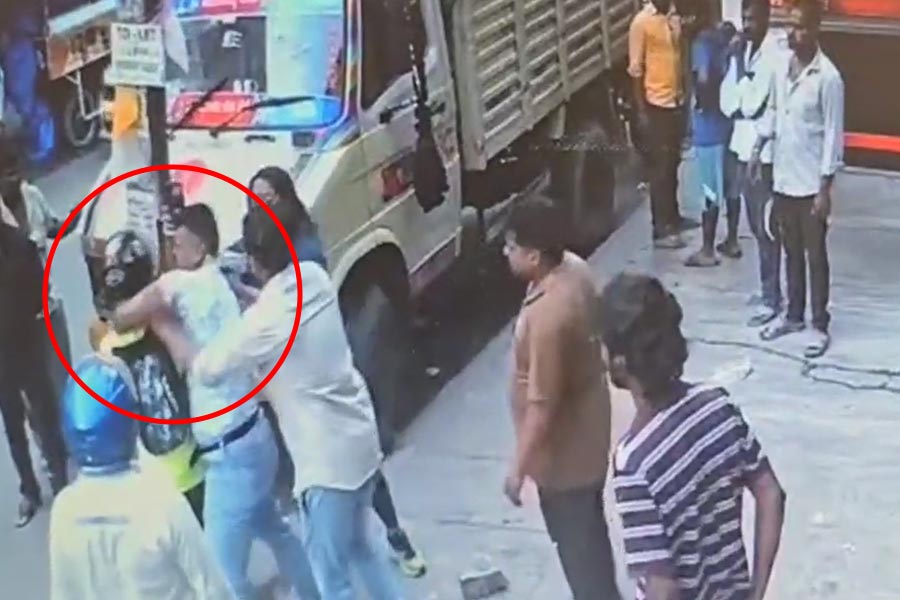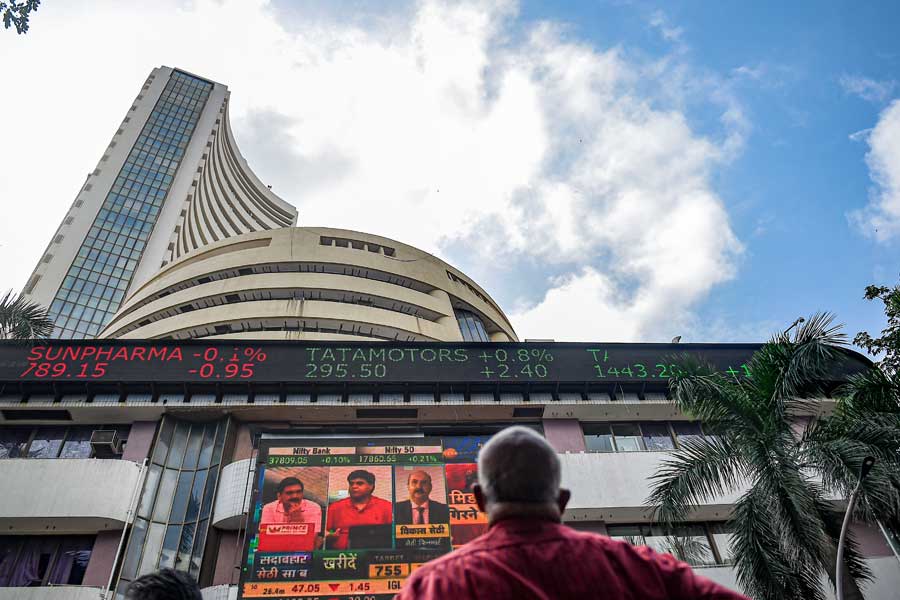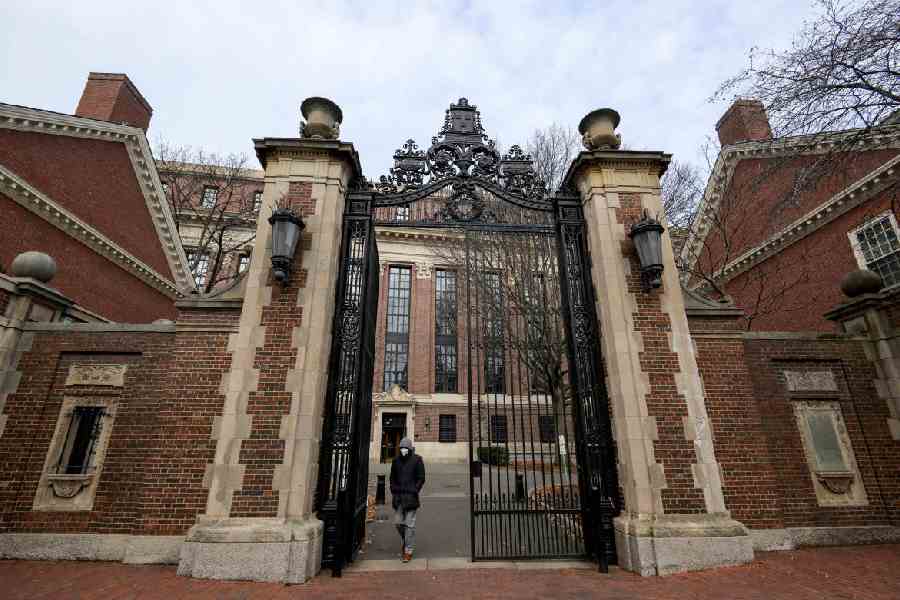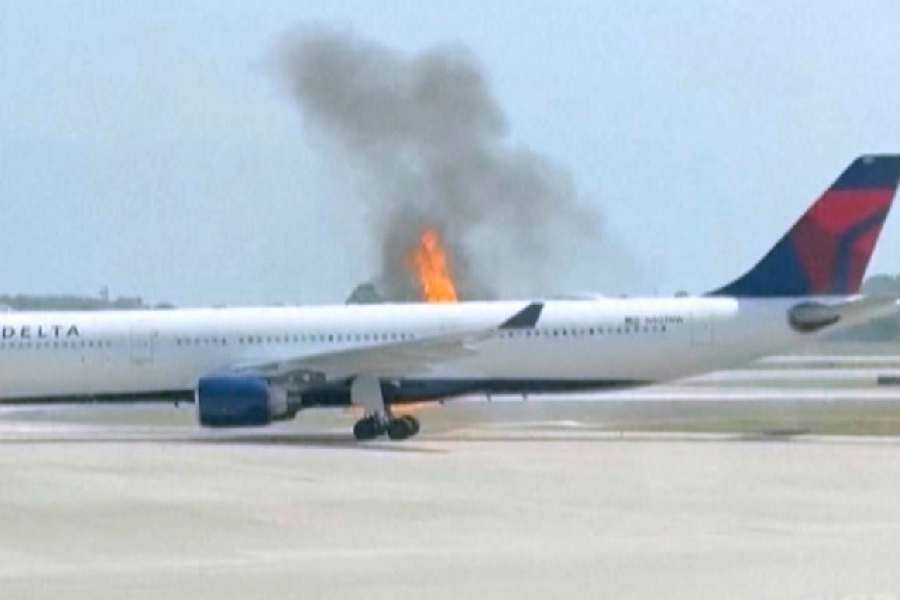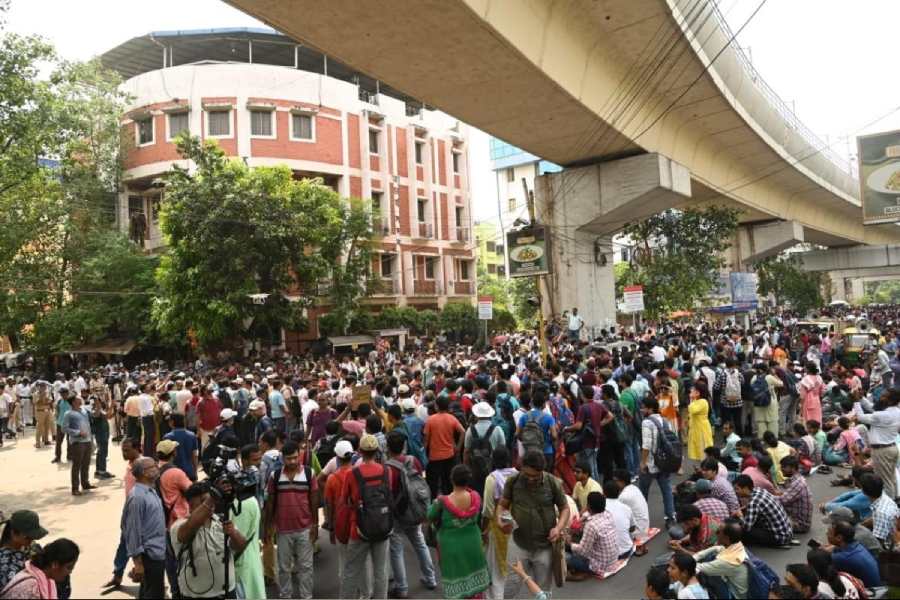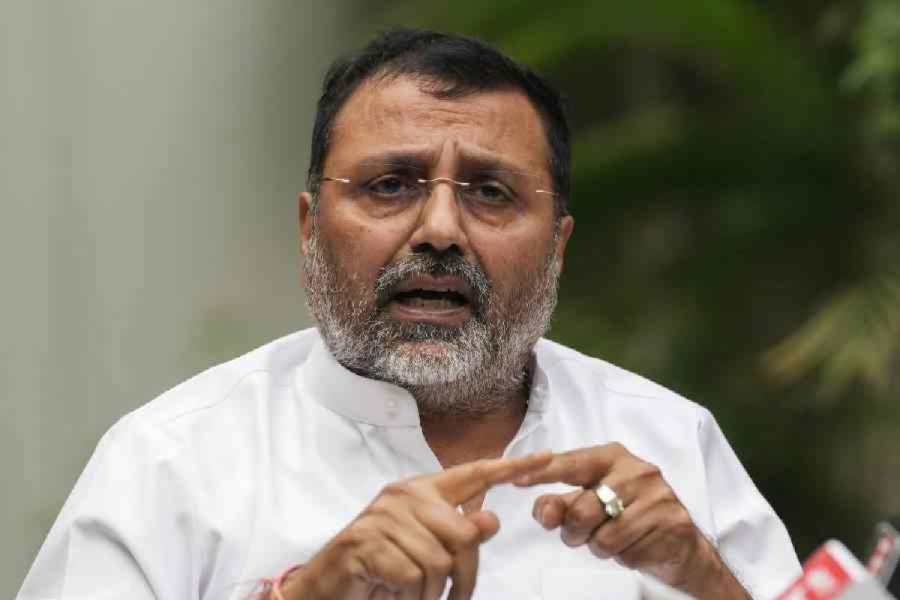 |
| Ghosh House on Pathuriaghat Street. Picture by Christopher Taylor |
The 100th birth anniversary of Manmatha Nath Ghosh on December 13, that is Saturday, was celebrated with a concert organised by the Manmatha Nath Ghosh Foundation in their 300-year-old house at 46 Pathuriaghat Street.
It was fitting tribute to the man whose father, Bhupendra Krishna Ghosh, had started the famous All Bengal Music Conference in 1934. After Bhupendra’s death the mantle fell on Manmatha, who continued to organise the conference for some years thereafter, till the music fell silent in 1953.
But unheard melodies still resonate through this house, three first-floor halls of which boast a gallery of photographs of the crème de la crème of Indian classical musicians.
This has for long been a musical family. Bhupendra’s father, Trailokya Nath, used to play the pakhawaj and Bhupendra had learnt music under the tutelage of Professor Mohammad Ali and the sitar under Kaukub Khan.
Eyewitness accounts of the musical soirees held every evening in this house abound. The stately houses that line Pathuriaghat Street were owned by wealthy Bengali families and although it was still crowded like the rest of Calcutta, all the streets used to be washed early in the morning and in the afternoon as well. Even Chitpur Road was cleaner.
The great rajas and maharajas — actually zamindars — used to frequent the house because of the music they could immerse themselves in, and it was second home to musicians from all over the country.
Evening performances were held in the three halls with wooden floors. The floors were covered with wall-to-wall mattresses with white sheets on top. The chandeliers and fans covered with crystals that still hang in this hall were there in those days too. It was a non-smoking zone. Smokers had the courtesy to leave the room.
The great sitarist Enayet Khan came from Park Circus two or three times a week. He was from Gouripur and apart from Bengali, Hindi came naturally to him, as was the case with most Muslim musicians. At one conference in the 1930s, the hall had become almost empty after Abdul Karim Khan’s performance. But the moment Enayet Khan sat down to perform and strum the “jhala” on his sitar, it did not take more than two to three minutes for the hall to be packed again.
Musicians refused to accept any remuneration from Bhupendra, but he insisted that they accept travelling expenses which did not amount to much. Many of the Bengali musicians based in Calcutta were highly placed. Many are the stories that are heard about these great musicians. There is one about the origin of Nazrul Islam’s popular song, “Shunya e buke pakhi…” that many may dismiss as apocryphal, but this is an eyewitness account. After Tagore had composed his famous song: “Alpa loia thaki tai…” Gnanendra Prasad Goswami, who was the resident musician, wanted to sing it his own way, and once while he was thinking aloud before Bhupenbabu, the latter advised him to seek Tagore’s permission.
Tagore asked Gnanendra Goswami to see Dinendranath Tagore, who had preserved the melodies of Rabindranath’s compositions. But Goswami had realised that Dinendranath would never allow him to deviate from the set tune, and so did not bother to see him.
He returned to Pathuriaghat downcast, when Nazrul arrived after a while with his son Sabyasachi from Garanhata, where, it is said, they used to rehearse in the house of the singer, Angurbala.
Bhupenbabu related Gnanendra’s problem to Nazrul and the poet was requested to write a song for his friend, the singer, echoing the Rabindrasangeet. An old servitor urged Gnanendra to cool down as his friend Nazrul had already started humming snatches of his own composition. Nazrul left, but not before promising that a new composition would be ready in two days. “Shunya e buke pakhi…” was thus born.
All the great Maharashtrian singers — Omkarnath, Patwadhan, Narayanrao Vyas and Paluskar — stayed in this house from time to time.
Faiyaz Khan usually stayed in Mahishadal Rajbari opposite Maulana Azad college. But during the conferences he stayed at 46 Pathuriaghat Street along with his tabla player and his brother-in-law Ata Husain, who was a learned musician.
In 1938 December, when local musicians had gathered in the hall, Hafiz Ali Khan walked in and exclaimed why there was no music when so many singers were around. He asked for his saaz (musical instrument) to be brought down. He played taans for 10 minutes while the musicians sang along.
Kesarbai, Hirabai and Gangubai had all performed there. In 1953, during the All Bengal Music Conference, Hirabai stayed at Maharashtra Nivas near Southern Avenue, while Bhimsen Joshi and Gangubai stayed at Asian Hotel on Prinsep Street. Early in the morning, Bhimsen would start riyaz while Gangubai would follow him on the tanpura.
Bhupenbabu had collected the rare photographs of musicians from various sources. Some pictures were photographed and later painted by Durganath Bhattacharya, whose studio was in Baranagar. Paintings by his son Krishnachandra hang in Mahajati Sadan.
Once TL Rana of Nepal had displayed a group photograph of musicians surrounding Faiyaz Khan at an exhibition organised by the CPI at Park Circus Maidan. The Rana gave Bhupenbabu the photograph, who got it enlarged by Durganath. He charged Rs 250 to magnify each portrait.


